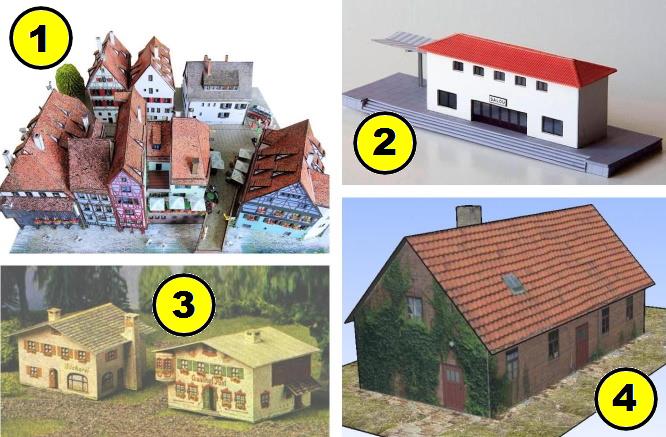I created this papercraft of a broken computer console using textures taken from the videogame Fallout. I believe it will be useful for people into Sci-Fi wargames and RPGs.
If you do a quick search on Google or Pinterest, you will find many interesting textures from this videogame.
I tried to play this game a while ago, episode 4, but there is so much to do in the game, so much information, that I kind of gave up. Maybe I'll try again sometime in the future.
Fallout is an open-world role-playing video game series set in an alternate world where the culture of the 1950s United States of America has been combined with a dystopian vision of the future following a nuclear war.
The series so far has six games that narrate different periods of the same story, the first (Fallout) was released in 1997 and the last (Fallout 76) in 2018. Developed by Interplay Entertainment and later by Bethesda Game Studios, the game takes place in an alternative world where a nuclear war has devastated the Earth.
Players take on the role of survivors who explore the wreckage of civilization, interact with other survivors and factions, undertake missions, and fight mutated creatures and hostile adversaries.
The series is known for its rich storytelling, impactful moral choices, and a vast, detailed world to explore. Throughout the games, players can customize their characters, developing skills and acquiring equipment to face the challenges of the post-apocalyptic world of Fallout.
Fallout has a dedicated fan base around the world who are often called "Vault Dwellers", referencing the characters who live in the Vaults, the underground shelters that serve as a safe haven against the dangers of the game's post-apocalyptic world. This term is an affectionate way of identifying with the game's universe.
If you liked this papercraft and want to build your own broken computer console from the eFallout universe, the download is easy and safe, directly from Google Drive.
Eu criei este papercraft de um console de computador avariado usando texturas tiradas do videogame Fallout. Eu creio que será útil para o pessoal dos wargames e RPGs em estilo Sci-Fi.
Se você fizer uma busca rápida no Google ou no Pinterest, vai achar muitas texturas interessantes deste videogame.
Eu tentei jogar esse game há algum tempo atrás, o episódio 4, mas é tanta coisa para se fazer no game, tanta informação, que eu meio que desisti.
Talvez eu tente novamente em algum momento no futuro. Fallout é uma série de videogames de RPG de mundo aberto que se passa em um mundo alternativo onde a cultura dos anos 50 dos Estados Unidos da América foi combinada com uma visão distópica do futuro após uma guerra nuclear.
A série conta até o momento com seis games que narram períodos diferentes da mesma história, sendo que o primeiro (Fallout) foi lançado em 1997 e o último (Fallout 76) em 2018. Desenvolvido pela Interplay Entertainment e posteriormente pela Bethesda Game Studios, o jogo se passa em um mundo alternativo onde uma guerra nuclear devastou a Terra.
Os jogadores assumem o papel de sobreviventes que exploram os destroços da civilização, interagem com outros sobreviventes e facções, realizam missões e lutam contra criaturas mutantes e adversários hostis.
A série é conhecida por sua narrativa rica, escolhas morais impactantes e um mundo vasto e detalhado para explorar. Ao longo dos jogos, os jogadores podem personalizar seus personagens, desenvolvendo habilidades e adquirindo equipamentos para enfrentar os desafios do mundo pós-apocalíptico de Fallout.
Fallout tem uma base de fãs dedicados em todo o mundo que são frequentemente chamados de "Vault Dwellers", fazendo referência aos personagens que vivem nos Vaults, os abrigos subterrâneos que servem como refúgio seguro contra os perigos do mundo pós-apocalíptico do game. Este termo é uma forma carinhosa de identificação com o universo do jogo.
Se você gostou deste papercraft e quer montar seu próprio console de computador avariado do universo de Fallout, o download é fácil e seguro, direto do Google Drive.





























